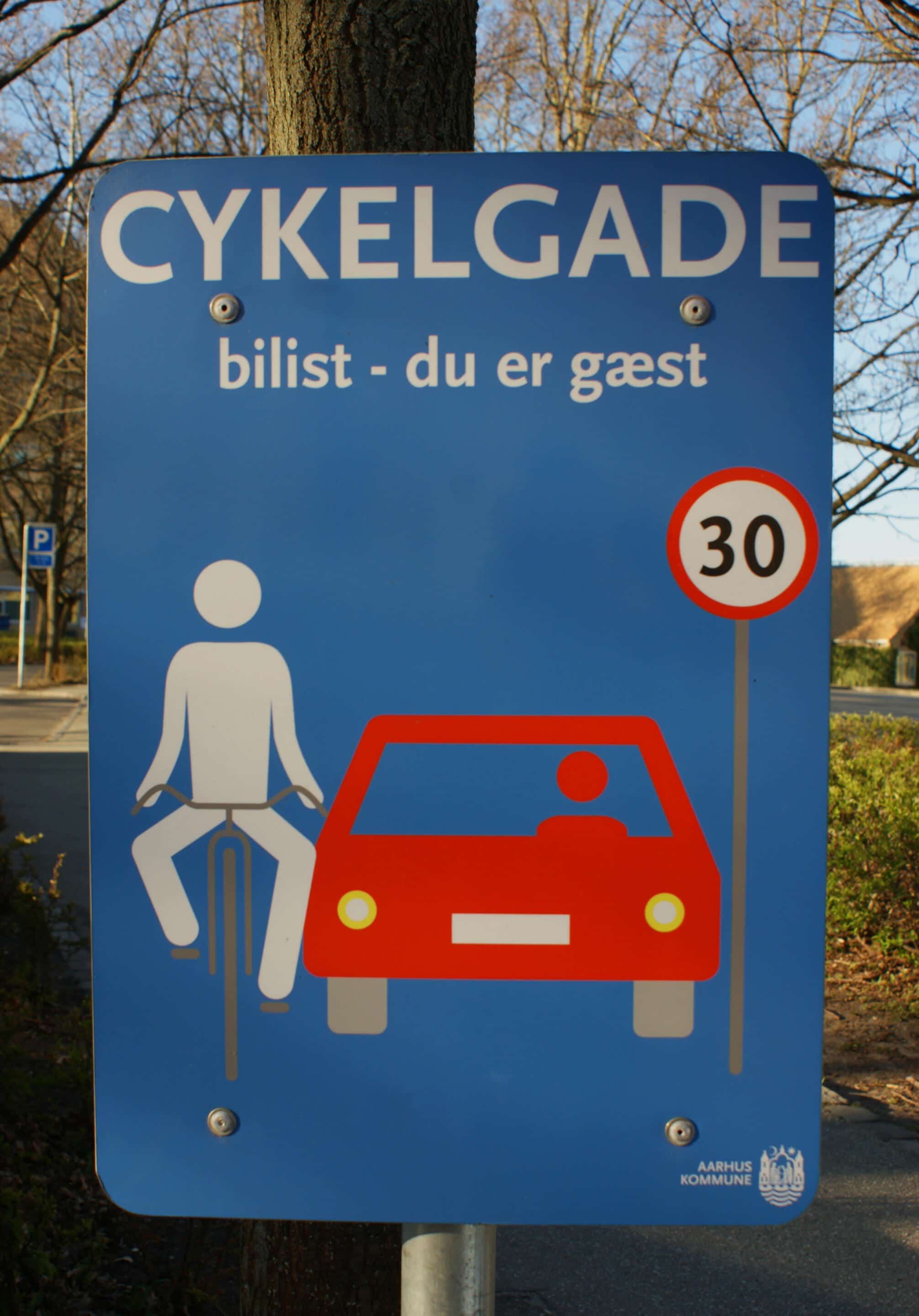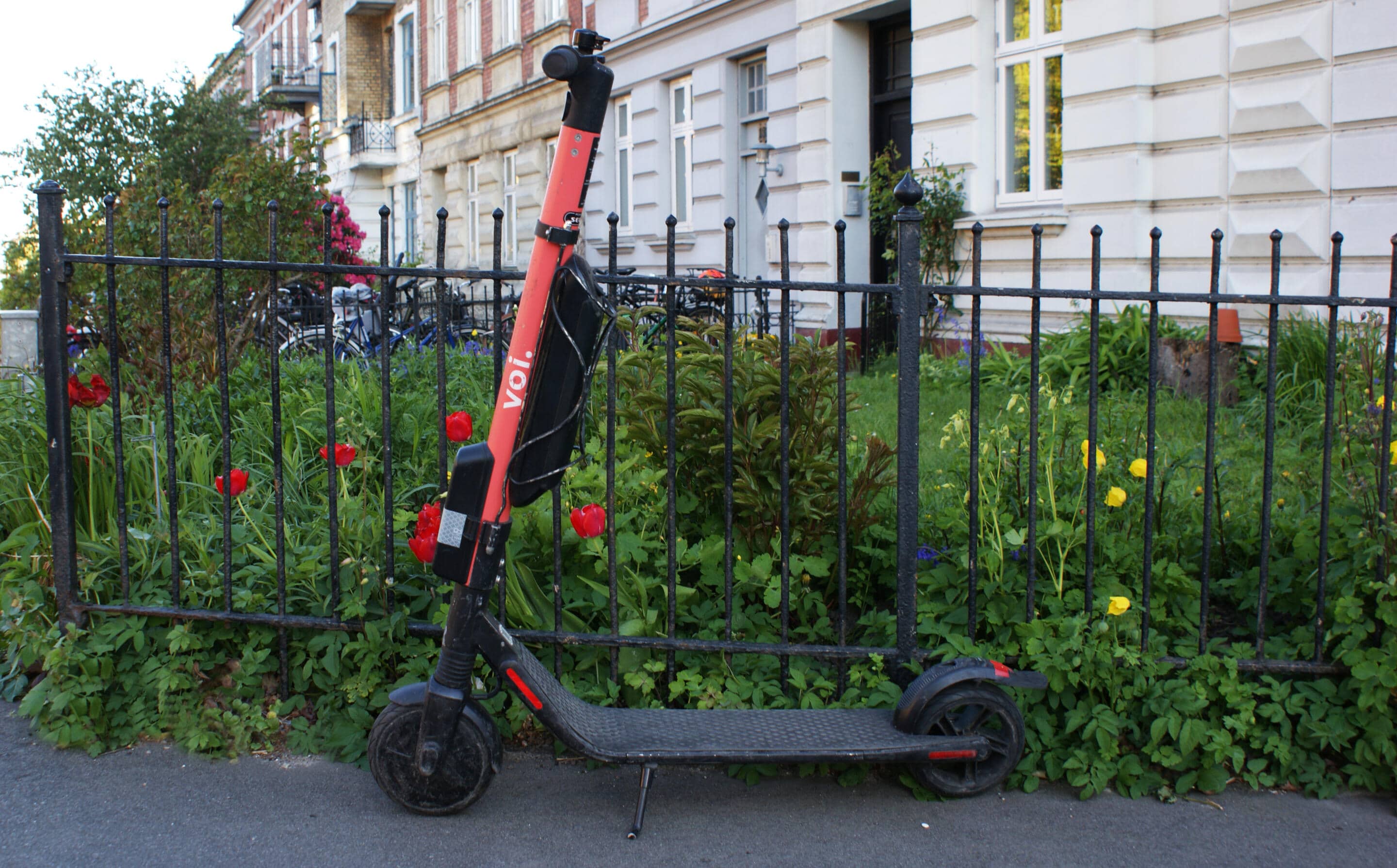A Multimodality Explosion
After discussing the liveable train station in the November 2019 issue, Simon Wind and Gustav Friis turn their attention to new mobility services and multimodality, reflecting on their role in the future of mobility in Aarhus in the midst of the COVID-19 crisis.
In recent years, and in 2019 specifically, there has been an increasing focus on multimodality in Aarhus, Denmark - new mobility services have, as in many other cities, emerged one after another.
In the summer of 2018, the city welcomed around 500 privately operated city bikes. In April 2019, following on from e-scooters being legalised as a means of transportation in Denmark in January 2019, a private operator was granted concession for operating 150 e-scooters in a sharing scheme for two years. In November that year 100 privately operated free-floating, shared electric cars were introduced in Aarhus. Before that, there was only a few shared electric cars available for the public. In January 2020, a new mobility service called GoTur, combining public and private mobility offers in one app, was officially launched. The service, operated by the Federation of Danish Motorists, FDM, will introduce car pooling to citizens in the Business Region of Aarhus as an alternative to being one and one person in each car.

 As part of the INTERREG BSR Project cities.multimodal two so-called mobility points were established in autumn 2019. The mobility bike hubs are among the measures implemented in Aarhus in 2019 that support a less car-intensive lifestyle. The mobility bike hubs, in all simplicity, provide parking facilities for cargo bikes which otherwise can be difficult or troublesome to find in the dense city. The mobility points built within the frame of the cities.multimodal project vary in scale and concept. From the advanced mobility hubs in the Latvian capital Riga to the simple, yet very useful cargo bike parking in Aarhus; and although inspired by mobility hubs in cities like Ghent and Bremen – the cities also found their own way through successful implementation, in a world where mobility is getting more and more free floating and new business models emerge.
As part of the INTERREG BSR Project cities.multimodal two so-called mobility points were established in autumn 2019. The mobility bike hubs are among the measures implemented in Aarhus in 2019 that support a less car-intensive lifestyle. The mobility bike hubs, in all simplicity, provide parking facilities for cargo bikes which otherwise can be difficult or troublesome to find in the dense city. The mobility points built within the frame of the cities.multimodal project vary in scale and concept. From the advanced mobility hubs in the Latvian capital Riga to the simple, yet very useful cargo bike parking in Aarhus; and although inspired by mobility hubs in cities like Ghent and Bremen – the cities also found their own way through successful implementation, in a world where mobility is getting more and more free floating and new business models emerge.
“The core objective for the city centre is that car traffic must not increase, and that travel demand derived from the growth of the city should be absorbed by other transport modes than the car”

A cycle lane in Aarhus
The modalities are there, but what about the demand?
All new mobility services and measures should ideally be in line with the framework of the mobility strategies for the city. In Aarhus, the mobility strategy is two-folded. First, it supports the vision of the city to create a good environment for everyone, including a city where, no matter which means of transportation you choose, you should experience good mobility. Second, the core objective for the city centre is that car traffic must not increase, and that travel demand derived from the growth of the city should be absorbed by other transport modes than the car. By 2025, 70% of all trips should be made by cycling, walking and public transport in the city centre. This ambition was formulated in 2017, only one year before the e-scooter entered the urban mobility scene, still too early to be considered as a new mobility service in the strategy at all.
As part of the budgetary conciliation for 2020, Aarhus City Council has requested a strategy for car sharing and Mobility as a Service and this is proposed to be extended to include all new and shared, private mobility services. This means that the strategy is envisaged to set the future administrative framework for dealing with e-scooters and any other future and still-to-be-discovered mobility services.
“When discussions about e-scooters took off in the autumn of 2018, no Danish city was prepared to regulate for the new mode – it's fair to say that nobody knew what to do”
When discussions about e-scooters took off in the autumn of 2018, no Danish city was prepared to regulate for the new mode – it's fair to say that nobody knew what to do. All we did know was that the invasion of e-scooters in other European cities had been terrible. In the summer of 2018, Aarhus had granted concession for operation of around 500 shared bikes without facing any problems. The natural choice was to use the same model, and to grant concession to one company for operation of a shared e-scooter scheme of 150 units in the city. However, the legislation, which the city uses for regulating the use of public space, was not ready for administrating free-floating mobility services. Cities did not have the legislative power to say no to operators; so, the City of Aarhus said yes, but with clear requirements for the operator. A hub system was required from the operator, and the e-scooter scheme ended up being somehow quasi free floating, also, to compensate for the low number of e-scooters. The city bike scheme in Aarhus is entirely hub-based, which means that the user can only pick-up or hand in the bike at one of the approximately 300 geofenced hubs in the city. None of the services use any docking stations or dedicated parking infrastructure.

European cities have struggled to regulate the use of E-scooters
From 1 January 2021, the legal framework will change the Danish cities’ regulatory power and make it easier to set a maximum of shared vehicles using public space for operation. However, this does not apply for shared bikes, where the municipality cannot set a maximum. The rationale behind this is that bikes and biking should be promoted. But this will only work if the business model behind the shared bike system is demand-driven and addresses the mobility needs of the citizens. In recent years, we have seen cities all over the world being flooded by new mobility services, such as shared bikes and e-scooters. Fortunately, this has not happened in Aarhus, where well-functioning agreements have been made with the operators of the shared services. We might though have a challenging future in front of us as operators of all shared mobility modes need to capitalise or increase their profit from their business models; and we ask ourselves will this end up bringing better mobility for the citizens in Aarhus?
“As a city, we need to create a good environment for everyone and a city where the citizens have access to good mobility options no matter where they live or what possibilities they have”
A good city for everyone
Well, the question is still rather open. We still have a difficult time comprehending exactly what is at stake when we are promoting multimodality as important for the mobility system of cities. As a city, we need to create a good environment for everyone and a city where the citizens have access to good mobility options no matter where they live or what possibilities they have. Supporting and promoting a variety of mobility options seem to be the model many cities are opting for as it potentially allows for mitigating the downsides of any one modality and incentivises private investment in mobility infrastructure as long as the private operators of shared mobility services align with the mobility demand of the citizens. For such a multimodal system approach to underpin the good city we believe some things needs to be in place:
Firstly, the amount of mobility services in the system is not in itself a goal. If we want people to change their everyday habits, we need to create both attractive and realistic alternatives in our mobility system. Each of the mobility services offered, both public and private, needs to bring quality mobility experiences and fulfil the mobility demand. For the private operators this also needs to be balanced with achieving economically sustainable business models.
Secondly, physical infrastructure supporting such as roads, paths, hubs, bike racks and charging stations needs to be in place. Achieving a truly multimodal mobility system, means mobility hubs have to be developed and placed at the right places in the city, where the citizens daily journeys naturally coincides with the mobility services. This requires strong political resolve because it is very costly to prioritise transport functions in attractive and valuable locations in the city, as well as fund the large investments needed to support attractive public and private mobility services.
Thirdly, multimodality both as a model to rethink the mobility system as well as a new way of thinking about and practicing everyday mobility for the citizens, puts MaaS in a central position. If infrastructure is the hardware, MaaS is the software that enable all these old and new, public and private mobility, to work together seamlessly. Without a tool for overview and coordination of mobility services, it seems impossible to shift citizens from their everyday singular modality way of transporting themselves.
And lastly, archiving the good city, and more sustainable societies, does also mean sometimes not travelling at all. There is a rising focus on travel demand management in urban mobility planning which is part of transitioning into a multimodal model. If the need to travel for work everyday changes or it does not have to be at a given time of day, the car might no longer be the most obvious choice, it might be another service in the mobility system. With the COVID-19 crisis this has become the everyday reality for many, and it has shown, that work often can be done from many places and does not always necessitate physical copresence and therefore travel.

Physical infrastructure like charging stations for electric vehicles like this one need to be in place
We believe these are some of the fundamental building blocks in creating a multimodal mobility system and in turn supporting the good city for everyone. It is important not to understate the city’s role here. While the private operators are part of the solution, it is up to the cities and its politicians to create the necessary framework and planning.
Here, both the municipal and national level meet while, at least in a Danish context, it is the municipalities that for the most part plan and build the mobility infrastructures, the regulations and laws that frame the possibility for the mobility services are created at national level. A city should not only be able to say yes or no to new mobility services, but also have strategy with clear selection criteria. As legislation and regulatory frameworks are being developed, the cities’ possibilities to pursue a genuine multimodal mobility system increase for the benefit of the citizens.
__________



